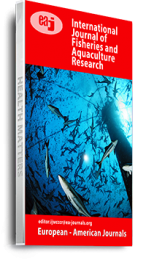Eighteen Sarpa salpa and fifteen Dentex gibbous fish collected randomly from the artisanal catch of Benghazi landing site, eastern Libya (32°36′ N 20°03′ E), during fall and winter of 2019 were used in the present study. Morphogenic features, and 21 key morphometric and 6 key meristic parameters were established for each fish. S. salpa was fusiform with a terminal mouth, narrow caudal peduncle and bifurcate caudal fin. The body was silvery white at the belly side, grading into silvery black at the dorsal side, and horizontal yellow to black stripes extended from the head region to the caudal peduncle. D. gibbosus was less fusiform with large eyes and a lunate caudal peduncle, the mouth was almost terminal, and the body was silvery but slightly pinkish and lighter at the belly side. S. salpa was heavier and longer than D. gibbosus, all its morphometric parameters were significantly higher than those of D. gibbosus except for the eye diameter and the mouth gape. This trend existed even when the parameters were related to total fish length as a ratio to eliminate the effect of size. The majority of binary pairs of morphometric parameters of S. salpa, and D. gibbosus, correlated strongly and positively with each other. Morphometric parameters located within the head region were related to the head length by linear and power regressions, and parameters located outside the head region were related to total fish length by similar regressions. Almost all regressions for both fish were positive and highly significant, indicating that all the parameters increased as the fish grew. The “b” value of the power length-weight regression indicated negative allometric growth for both fish; that of S. salpa was 2.715, and that of D. gibbosus was 2.246. The differences in morphometric traits of both fish were discussed in relation to modes of feeding and swimming, camouflage, and habitat. The Fulton condition factors were 1.733 and 1.247 in order. These factors did not change significantly during fish growth. Almost all the meristic parameters did not correlate with fish length, meaning that they were conservative features and can be used to establish meristic forms. The meristic forms derived were:
D, X-XI (XI) + 14-17 (16); A, III + 13-15 (14); P, 14-16 (15); V, I + 5; LL, 70-80 (76) for S. salpa, and,
D, XI-XII (XII) + 10-11 (10); A, III + 8-9 (9); P, 14-15 (15); V, I + 5; LL, 60-65 (62) for D. gibbosus. The numbers between parenthesis are the modes.
Citation: Amnnah khalid khalleefah, Sayed Mohamed Ali and Ramadan A. S. Ali (2022) Comparative Study on Morphology of Sarpa Salpa and Dentex Gibbosus (Perciformes) From the Southern Mediterranean Coast (Eastern Libya), International Journal of Fisheries and Aquaculture Research, 8,
(1) , 1-28
Keywords: Dentex gibbosus, Mediterranean, Morphology, Sarpa salpa, meristic, morphometry

